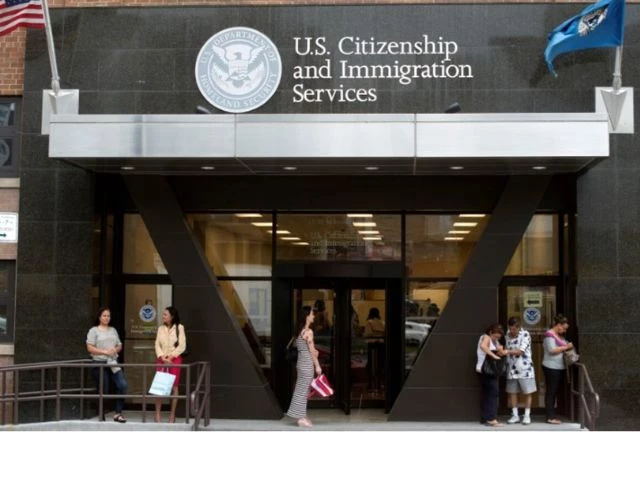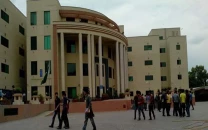USCIS starts FY26 H-1B petition filing with higher fees and new rules
The filing period for H-1B petitions opens today, with significant fee increases and tougher scrutiny.

The United States Citizenship and Immigration Services (USCIS) has completed the initial lottery for H-1B visas for fiscal year 2026, setting the stage for petition filing to begin today, April 1, 2025.
This year, USCIS received enough electronic registrations to meet the required quotas for both the regular and master’s caps. The agency confirmed that it has randomly selected enough beneficiaries to proceed with the next phase of the process.
Prospective petitioners with selected beneficiaries have been notified and can now file their H-1B cap-subject petitions.
The filing process opens today, with petitioners required to submit their applications within a 90-day window.
Only those with selected registrations are eligible to submit petitions, and these must be filed online or at the appropriate locations, as indicated in the selection notice.
The designated filing window will be open for at least 90 days, ensuring employers have sufficient time to prepare their applications.
To complete their petition filings, employers must submit Form I-129 (Petition for a Nonimmigrant Worker) along with supporting documentation, including a certified Labor Condition Application (LCA), evidence that the offered position qualifies as a specialty occupation, and proof that the beneficiary meets the educational and work experience requirements for the position.
Petitioners must also provide a copy of the beneficiary’s passport or travel document used at the time of registration.
Importantly, USCIS has reminded applicants that being selected in the lottery does not guarantee that the petition will be approved. Selection only grants eligibility to file a petition, and the USCIS will thoroughly review each petition to ensure that it meets the legal and regulatory requirements.
Changes and Fee Increases
In addition to the filing process, USCIS has introduced significant changes and fee hikes for fiscal year 2026. One of the most notable changes is the substantial increase in the H-1B registration fee, which has jumped from $10 to $215 for the upcoming fiscal cycle. Employers must now factor this increased fee into their application costs.
Furthermore, filing fees for Form I-129 petitions have also seen a rise. Small employers and non-profits will now pay $780 for each petition, while large employers will face a fee of $1,385.
A new $600 asylum program fee has also been introduced for larger companies, though the $500 fraud prevention and detection fee remains unchanged. These increases, combined with stricter compliance requirements, are expected to put additional pressure on employers navigating the H-1B filing process.
New Beneficiary-Centric Selection Process
USCIS has implemented a new beneficiary-centric selection system this year, aimed at reducing fraud and improving fairness. Under the new process, each beneficiary is entered into the lottery only once, regardless of how many employers register them.
This system is designed to curb duplicate entries and ensure that each individual has an equal chance in the lottery, regardless of the number of employers that wish to sponsor them.
The new system follows an increased emphasis on compliance and integrity, which has led to stricter scrutiny of the petitions. USCIS will carefully review each petition to ensure that the position being offered qualifies as a specialty occupation and that the beneficiary meets the necessary qualifications.
Failure to meet these standards could result in petition rejections or requests for additional evidence.
What Happens After Filing
Once the petitions are filed, USCIS will review them to determine whether they meet all requirements. The agency may approve petitions, deny them, or issue a Request for Evidence (RFE) if additional information is needed to make a decision. Employers are encouraged to submit complete and accurate documentation to avoid delays.
In cases where petitions are rejected, withdrawn, or denied, USCIS may hold a second lottery round later in the year to fill any remaining slots for the H-1B cap.
Looking Ahead
The increase in filing fees and the new beneficiary-centric system reflect USCIS’s commitment to enhancing the integrity of the H-1B visa process while ensuring that employers and petitioners comply with the program’s requirements.
With the petition filing process now open, employers and potential H-1B beneficiaries face the challenge of navigating a more competitive and costly visa process.
For those who are selected in the lottery, the next steps include ensuring that all documentation is complete and accurate before submission.
The filing deadline is just the beginning, and petitioners must continue to meet all USCIS standards to increase their chances of securing approval.


1736834402-0/Untitled-design-(59)1736834402-0-100x90.webp)






1701351241-1/Afghan-refugees-(3)1701351241-1-208x130.webp)













COMMENTS (1)
Comments are moderated and generally will be posted if they are on-topic and not abusive.
For more information, please see our Comments FAQ